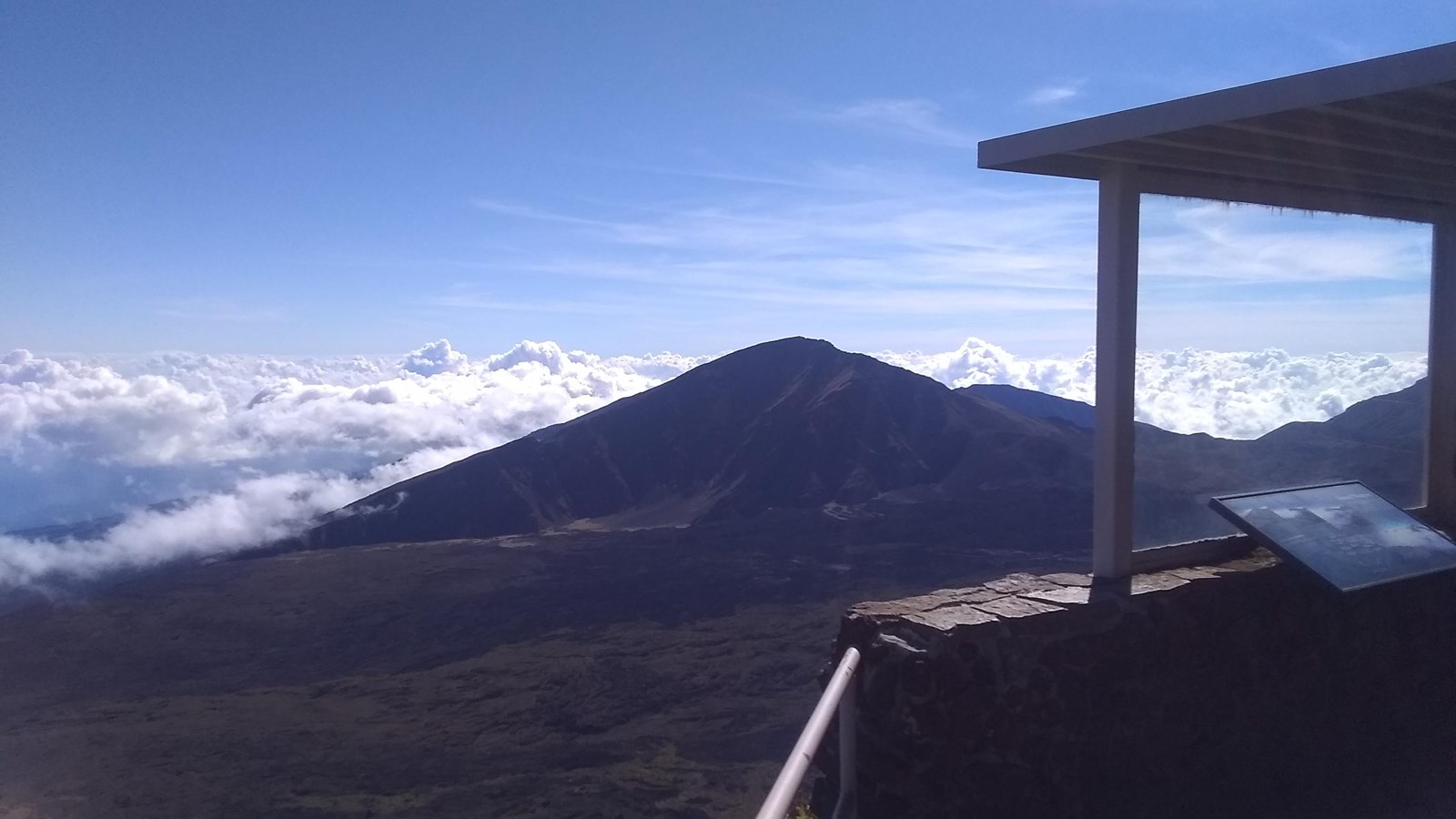Last updated: April 5, 2024
Place
Leleiwi Overlook

NPS Photo / Mark Kuaola Raymond
Historical/Interpretive Information/Exhibits, Parking - Auto, Scenic View/Photo Spot
The Leleiwi Overlook provides views not only into the crater itself, but also out the Kaupō Gap, and down the Koʻolau Gap to the coastline along Maui’s north shore. Leleiwi translates to “bone altar,” and although the name of this area was recorded on early maps of the crater, the history of the name itself has been lost.
The overlook was developed in 1966 to offer visiors a new perspective from which to view the crater. It was part of many projects undertaken during Mission 66, a National Park Service program designed to improve park visitor experiences by improving or creating new visitor centers, campgrounds, and trails.
It’s a 0.30 mile (0.48 km) roundtrip to Leleiwi Overlook from the parking lot, the trail rising in steps 100 ft (30 m) to the edge of the crater. Near the trailhead are the remains of a stone wall built by ranchers in the late 1800s to guide cattle through the rough landscape. Native plants found along the trail include mamane, pukiawe, ʻohelo, and naʻenaʻe (also called kūpaoa).
From the overlook on a clear day one can see down to Maui’s north shore through the Koʻolau Gap to the left. To the left of the Ko'olau Gap, the switchbacks of the new Halemauʻu trail built by the CCC are visible winding along the cliffside. The original Halemauʻu trail used by Hawaiians to traverse the crater and later by ranchers to run cattle has since eroded away. To the right of the gap is Hanakauhi peak, with the Kaupō Gap visible in the distance farther to the right. The Koʻolau and Kaupō Gaps were formed by erosion over many thousands of years. Subsequent eruptions have filled the original valleys, creating their distinctive flat bottoms. Two of the most recent eruptions are still visible, one from Puʻu o Māui and one from Ka Luʻu o ka ʻŌʻō, both occuring within the last thousand years.
The tradewind inversion sometimes fills the crater with clouds, but Leleiwi may still be worth a visit on cloudy days during sunrise or sunset. The Specter of Brocken, or Brocken Specter, occurs when someone is directly between the sun and the clouds at high elevation. Their shadow on the clouds appears ringed by a faint rainbow.
